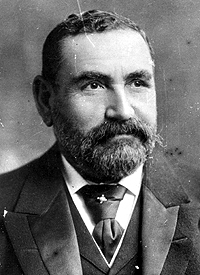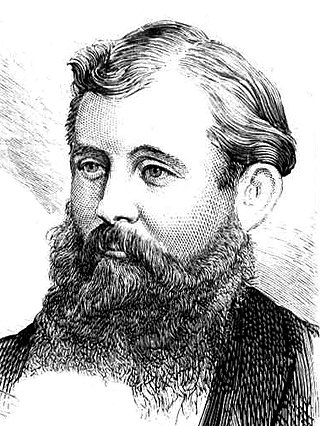In Australia, referendums are public votes held on important issues where the electorate may approve or reject a certain proposal. In contemporary usage, polls conducted on non-constitutional issues are known as plebiscites, with the term referendum being reserved solely for votes on constitutional changes, which is legally required to make a change to the Constitution of Australia.
Members of the New South Wales Legislative Council from 1978 to 1981 held office following the 1978 referendum which reduced the number of members from 60 to 43, provided for the direct election of members of the Legislative Council and that members would serve for 3 terms of the Legislative Assembly. Only 15 of the 43 members had been elected at the 1978 Legislative Council election. Under the transitional arrangements, 28 members had been indirectly elected by joint sittings of the New South Wales Parliament, with 14 of those members to retire at the next general election, held in 1981, and the remaining 14 members would retire at the following general election, held in 1984.
A referendum concerning reform of the New South Wales Legislative Council was put to New South Wales voters on 25 May 1991. The referendum coincided with that year's New South Wales general election. The change passed comfortably. The text of the question was:
Do you approve of the Bill entitled 'A Bill for an Act:
(a) to reduce the number of politicians in the Legislative Council and to reduce their maximum term of office; and
(b) to apply to the Legislative Council the same method of filling casual vacancies as applies to the Senate ?
Macquarie, until 1910 The Macquarie was an electoral district of the Legislative Assembly in the Australian state of New South Wales, created in 1894 and named after the Macquarie River. It was re-created in 1904, retaining nothing but the name, then abolished in 1920.
Members of the New South Wales Legislative Council between 1976 and 1978 were indirectly elected by a joint sitting of the New South Wales Parliament, with 15 members elected every three years. The most recent election was on 27 November 1975, with the term of new members commencing on 23 April 1976. The terms of members were affected by the 1978 referendum which provided for the direct election of members of the Legislative Council. The members whose terms were due to expire in 1979 or 1982 had their terms expire at the next general election, held in 1978, those members whose terms were to expire in 1985 would retire at the second general election, held in 1981, and those members whose terms were to expire in 1988 would retire at the third general election, held in 1984.
A referendum concerning the abolition of the New South Wales Legislative Council was put to New South Wales voters on 29 April 1961. The abolition was specifically rejected by voters. The text of the question was:
Do you approve of the Bill entitled "A Bill for an Act to Abolish the Legislative Council to provide that another Legislative Council shall not be created, constituted or established nor shall any Chamber, Assembly or House, other than the Legislative Assembly, designed to form part of the Legislative Parliament of New South Wales, be created, constituted or established until a bill for the purpose has been approved by the electors in a referendum to amend the Constitution Act, 1902 and certain other Acts; and for purposes connected therewith."

The See ministry was the 30th ministry of the New South Wales Government, and was led by the 14th Premier, Sir John See. The title of Premier was widely used to refer to the Leader of Government, but was not a formal position in the government until 1920. Instead the Premier was appointed to another portfolio, usually Colonial Secretary.
The 1981 New South Wales referendum was held on 19 September 1981, the same day as the state election. The referendum contained two questions:
- Do you approve a Bill for an Act to extend the maximum period between general elections for the Legislative Assembly from 3 years to 4 years?
- Do you approve a Bill for an Act to require Members of Parliament to disclose certain pecuniary interests and other matters?

The Heffron ministry (1959–1962) or First Heffron ministry was the 59th ministry of the New South Wales Government, and was led by the 30th Premier, Bob Heffron, of the Labor Party. The ministry was the first of two consecutive occasions when the Government was led by Heffron, as Premier.

John Fitzgerald Burns was an Australian politician, member of the Parliament of New South Wales, Postmaster-General in the 1870s and Colonial Treasurer in the 1880s.
The 1978 New South Wales state election was the first direct election for the Legislative Council since the council was reconstituted in 1856 and the creation of the Legislative Assembly. This was the result of the 1978 referendum which also reduced the number of members from 60 to 43 and that provided that members would serve for 3 terms of the Legislative Assembly. Under the transitional arrangements, 28 members had been indirectly elected by joint sittings of the New South Wales Parliament.
Members of the New South Wales Legislative Council who served from 1861 to 1864 were appointed for life by the Governor on the advice of the Premier. The 1855 Constitution of New South Wales provided that the first council was appointed for a period of 5 years, but that subsequent members would be appointed for life. The previous council had ended in controversy with an attempt was made to swamp the chamber by appointing 21 new members in May 1861, because the council had rejected the Robertson land bills. When the council met and the new members were waiting to be sworn in, the President Sir William Burton stated that he felt he had been treated with discourtesy in the matter, resigned his office of president and his membership, and left the chamber. 19 other members also resigned in protest. In the absence of the President and Chairman of Committees, under the standing orders the council was adjourned. There were no further sitting days before the terms of the members of council had expired.
Members of the New South Wales Legislative Council who served from 1856 to 1861 were appointed for a fixed term by the Governor on the advice of the Premier. The 1855 Constitution of New South Wales provided that the first council following self-government was for a period of 5 years from the first appointments, but that subsequent members would be appointed for life. The first appointments were on 13 May 1856 so that the first term lapsed on 13 May 1861. The number of members of the council had to be at least 21 and subsequent appointments also lapsed on 13 May 1861. The President was Sir Alfred Stephen until 28 January 1857, John Plunkett until 6 February 1858 and then Sir William Burton.
A by-election was held for the New South Wales Legislative Assembly electorate of Bathurst on 8 February 1884 as a result of the Legislative Assembly declaring the seats of Francis Suttor, and George Reid, were vacant as a result of a report of the Committee of Elections and Qualifications that they were incapable of being elected, or of sitting, or voting, as a member of the Assembly.
A by-election was held for the New South Wales Legislative Assembly electorate of East Sydney on 29 February 1884 as a result of the Legislative Assembly declaring the seats of Francis Suttor, and George Reid, were vacant as a result of a report of the Committee of Elections and Qualifications that they were incapable of being elected, or of sitting, or voting, as a member of the Assembly.
A by-election was held for the New South Wales Legislative Assembly electorate of Goulburn on 13 June 1861 because of the resignation of Charles Walsh. Walsh stated that he had been elected to support the Land Bills, which would open up the free selection of Crown land, and the Legislative Council Bill which would replace the nominated council with an elected body. These bills had not been passed by the Legislative Council and the Premier Charles Cowper had arranged for 21 new members to be appointed to the council. Walsh stated that as the bills "will be carried through both branches of the legislature, and become the law of the land" he therefore resigned as the tasks had been achieved.
A referendum concerning the reduction of the members of the New South Wales Legislative Assembly was put to voters on 16 December 1903, in conjunction with the 1903 federal election. The referendum was conducted on the basis of optional preferential voting. However, preferences were not counted, as an overwhelming majority voted to reduce the number of members to 90.
A by-election was held for the New South Wales Legislative Assembly electorate of The Hastings on 4 July 1870 as a result of the Legislative Assembly declaring the election of Horace Dean was void. Dean had been appointed the postmaster at Tinonee at the time of the nominations for the 1869 election and resigned the following day. The Committee of Elections and Qualifications held that because he had an office of profit under the crown at the time of his nomination meant he was incapable of being elected, or of sitting, or voting, as a member of the Assembly.
A referendum concerning the reform of the New South Wales Legislative Council was put to New South Wales voters on 13 May 1933 and was passed by the voters with a margin of 2.94%. The text of the question was:
Do you approve of the Bill entitled "A Bill to reform the constitution and alter the Powers of the Legislative Council; to reduce and limit the number of Members of the Legislative Council; to reconstitute the Legislative Council in accordance with the reformed constitution; to amend the Constitution Act, 1902, and certain other Acts; and for purposes connected therewith."
There have been 18 referendums in New South Wales, 8 of which concerned proposals to amend the New South Wales Constitution, half of which concerned the Legislative Council. While the Constitution of Australia was adopted after the 1898 and 1899 referendums in all of the proposed states, the Constitution of New South Wales, promulgated in 1902, was an Act of the Parliament of New South Wales which could be amended by Parliament. Since 1927 the Constitution has included provisions that can only be amended following approval in a referendum. 8 of the referendums, including 5 on the sale of alcohol, did not involve any proposed amendment to the Constitution. While these have traditionally been called referendums, they could also be described as plebiscites.


